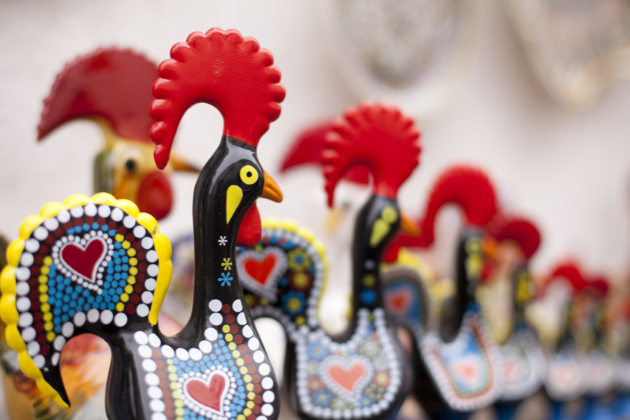Share Article
The Barcelos Rooster is one of the most iconic symbols of Portugal, representing the country’s culture, faith and tradition. Recognized for its vibrant colors and its meaning of good luck, this figure has its origins in an ancient legend that dates back to the city of Barcelos, in the north of Portugal.
The Legend of the Rooster of Barcelos
The story of the Rooster of Barcelos is associated with a miracle that supposedly occurred in the city. According to legend, a Galician pilgrim, on his way to Santiago de Compostela, was unjustly accused of a crime and sentenced to hang. Before the execution, the man asked to be taken before the judge who had condemned him, who was feasting. The pilgrim pointed to a roast rooster on the table and declared that, as proof of his innocence, the rooster would rise up and crow.
In disbelief, the judge ignored the request. However, at the moment of execution, the roasted rooster rose up and crowed, proving the pilgrim’s innocence. The judge, in a hurry, ran to stop the execution and managed to save the man in time. Years later, the pilgrim returned to Barcelos and erected a monument in honor of Saint James and the Virgin Mary, thanking them for the miracle that saved him.
The Symbol of the Rooster
Over the centuries, the Rooster of Barcelos has become a symbol of faith, justice and good luck. Today, her colorful image is one of the most popular souvenirs from Portugal, often found on ceramics, embroidery and even tourist products.
Interesting facts about the Rooster of Barcelos
Vibrant colors have a meaning – Red symbolizes love and passion, yellow represents joy, blue brings tranquility and green is linked to hope.
It is a good luck charm – Many Portuguese people believe that having a Barcelos Rooster at home or at work brings protection and happiness.
International recognition – The Rooster of Barcelos has become one of the best-known symbols of Portugal in the world, being frequently used in cultural representations of the country.
The tradition of ceramics – Most of the Galos de Barcelos are made of hand-painted clay, keeping alive one of the most traditional arts of Minho.
Its presence in gastronomy – Despite being a decorative symbol, the rooster is also present in gastronomy, especially in typical dishes from the north of Portugal.
